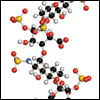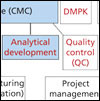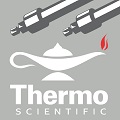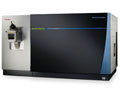| Chromatography Corner |

|
The Evolution of UHPLC in Pharmaceutical Analysis
Michael Dong offers advice on using ultrahigh-pressure liquid chromatography (UHPLC) for method development in pharmaceutical analysis and the important distinction between method conversion and method transfer. |
|
| Chromatography News |

Image credit: MOLEKUUL/SCIENCE PHOTO LIBRARY/Getty Images |
High-Throughput Screening of Heparin Using LC–MS
Researchers have published a new approach to heparin screening that allows the detection of adulteration within one hour. Published in the journal Analytical Chemistry, the study presents a screening strategy using hydrogen peroxide digestion followed by fast reversed-phase ion pairing liquid chromatography (reversed-phase IP–LC) coupled with tandem mass spectrometry (MS–MS) to detect contamination of heparin samples. |
|
|
| Featured Article |
|
|
 |
Separation Science in Drug Development, Part III: Analytical Development
The third installment in this series provides an overview of modern practices of separation science in small-molecule drug development. It highlights approaches in high performance liquid chromatography (HPLC) method development and physical or chemical characterization to support process chemistry and formulation development, and for assessment or control of clinical trial materials. |
|
| |
| Featured Products |
 |
 |
| LC column selector app |
New Thermo ScientificTM Orbitrap FusionTM LumosTM TribridTM Mass Spectrometer |
Get the answers you need by choosing the most appropriate analytical, high throughput, HPLC, UHPLC, or bioLC column for your application with the new Column Genie app.
 Learn more Learn more |
Test new limits of detection, characterization and quantitation with the latest TribridTM mass spectrometer. The new Thermo ScientificTM Orbitrap FusionTM LumosTM TribridTM Mass Spectrometer is designed to expand performance in advanced proteomics, biopharma and metabolomics applications, including quantitation using isobaric tags, low level PTM analysis, data independent acquisition (DIA), and top down proteomics. The new instrument features enhanced sensitivity resulting in improved analyte detection, characterization and quantitation, enabling scientists to perform more comprehensive sample analyses faster and with better accuracy than ever before. Breakthrough Gains for Quantitative Biology Sensitivity Transformed.
 Learn More Learn More |
|
|
|
|
